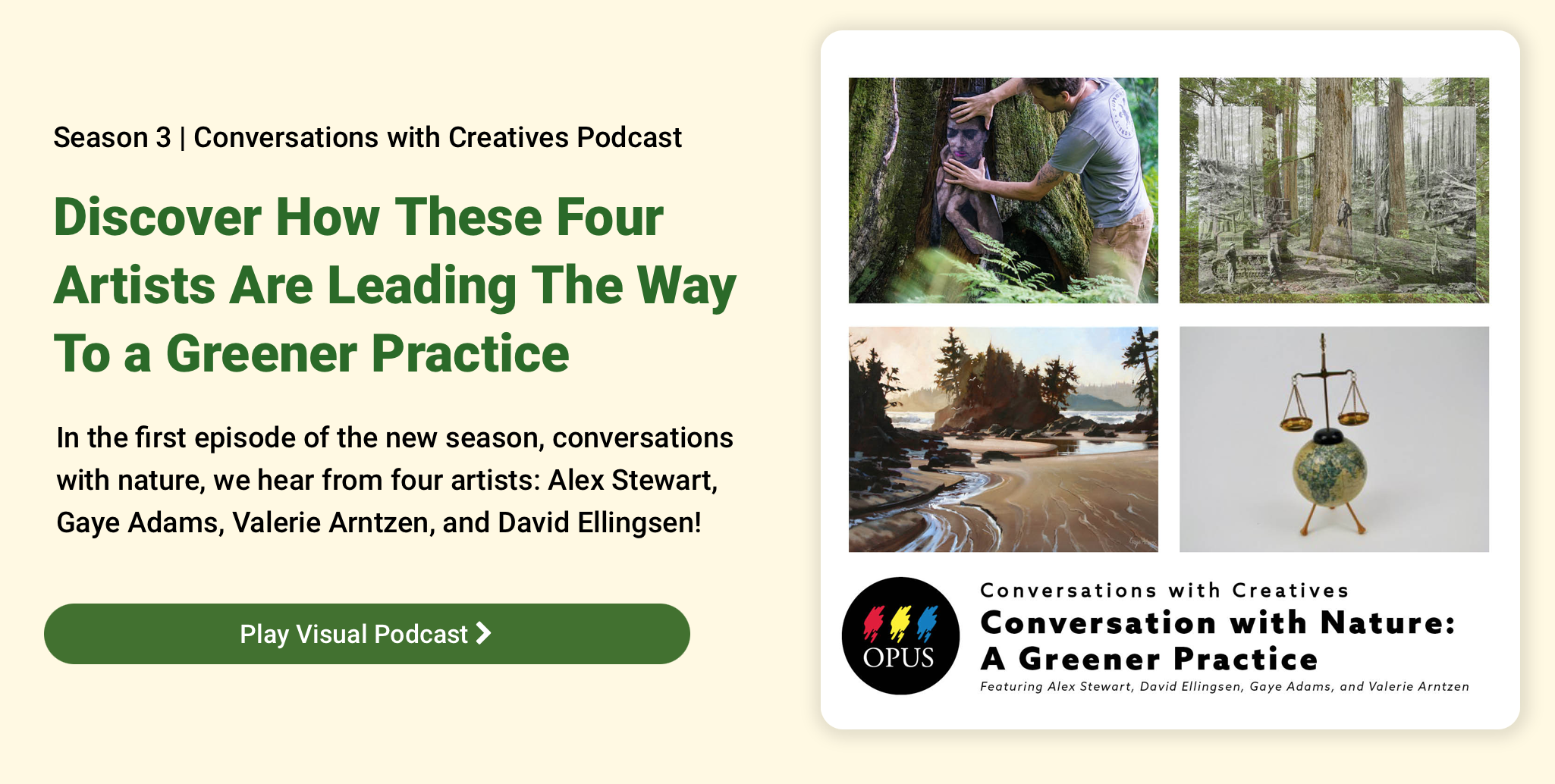A Greener Practice – Environmentalism and Art
April 27, 2022We’re currently exploring the theme ‘Conversations With Nature’, discussing the different ways artists exchange dialogue with their natural surroundings and discover fresh paths of creativity. In the first podcast episode on this subject, Alex Stewart, Valerie Arntzen, Gaye Adams and David Ellingson shared their views on A Greener Practice.
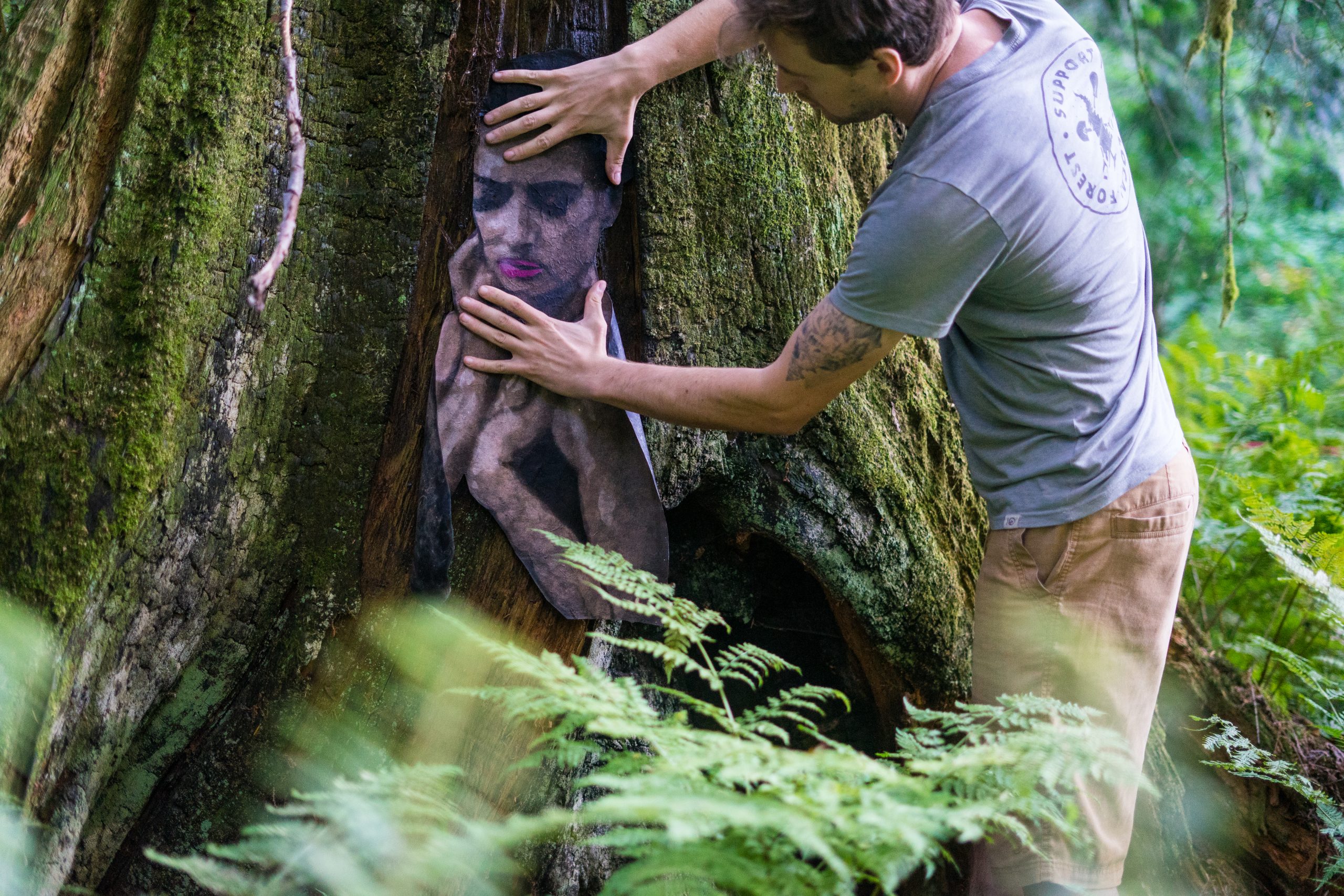
Alex Stewart’s work focuses on creating a narrative for his continued efforts toward sustainability and environmental preservation. He creates in the forests of British Columbia, using homemade paints and showing how they degrade in nature in order to humanize our environment. The result is a merging of street art and Plein air, depicting soft, ephemeral female figures interacting with nature.
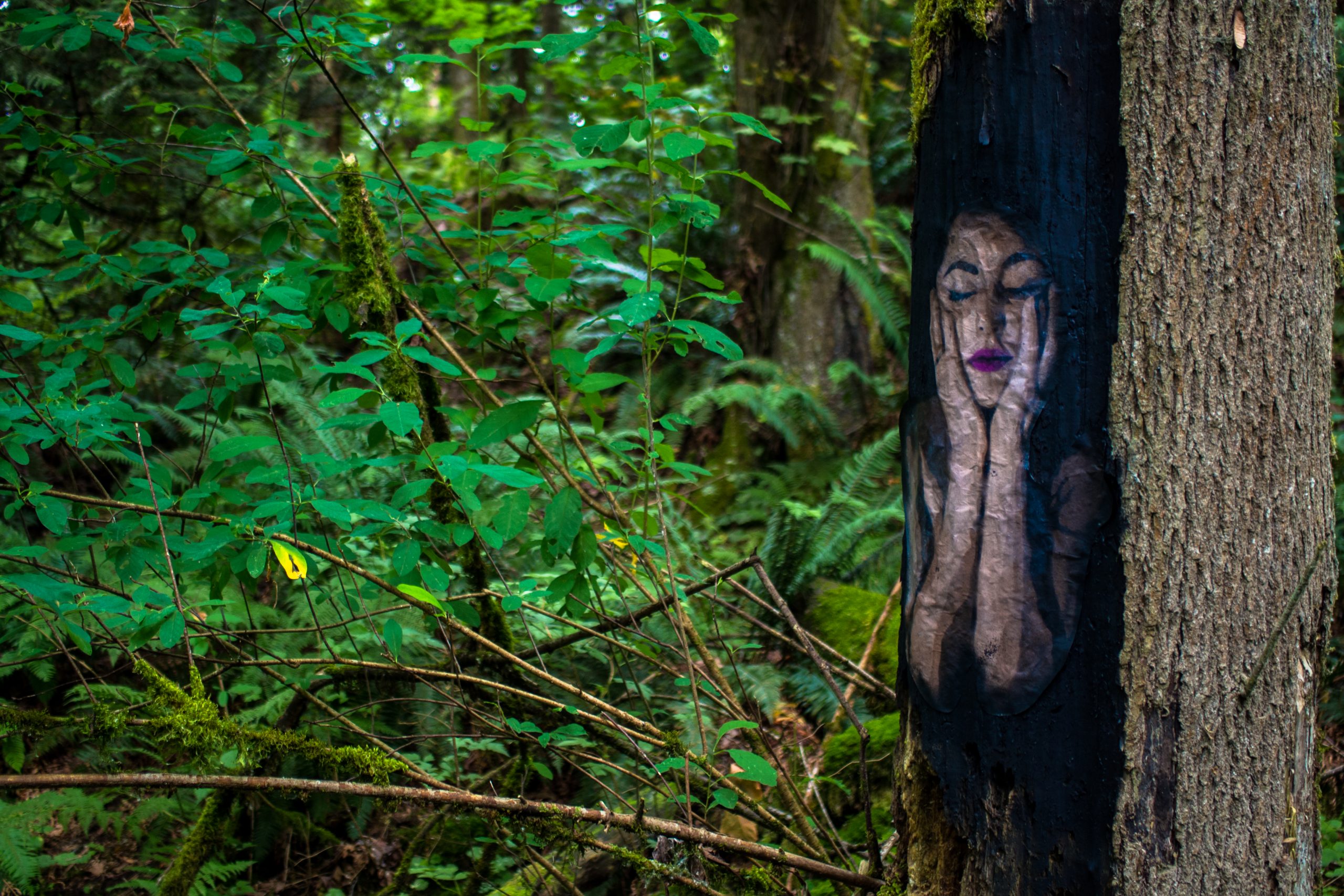
I create portraits but do it using handmade papers and paint that changes almost every time I make it, but its three key ingredients are flour, water and sugar. My whole practice is based on creating as little waste as an artist as I can, which is pretty hard as it’s pretty innately wasteful to be an artist and create, so I try to re-use as much as I can.
Most people I’ve talked to don’t think twice about rinsing their paints down the drain and that’s not really the best practice, so if you can build yourself a little at-home filtration system to get the pigments out, that’s better.
I use earth pigments – I’ll make my own condensed charcoal and use that for my blacks and greys – and get other pigments which are sold non-toxic. One of the spray paints I use in my studio work is made from sugarcane – I haven’t noticed a decline in pigment quality or lightfastness or anything like that.
The possibilities are out there, it just requires letting go of some traditions in the art world. I feel like there’s a huge attachment to, ‘This is how it’s always been done so we should keep doing it this way, but that’s something that needs to be challenged. I think it will get there, it will just take time.
Website: www.enlifestudio.com
Instagram: enlifestudio/
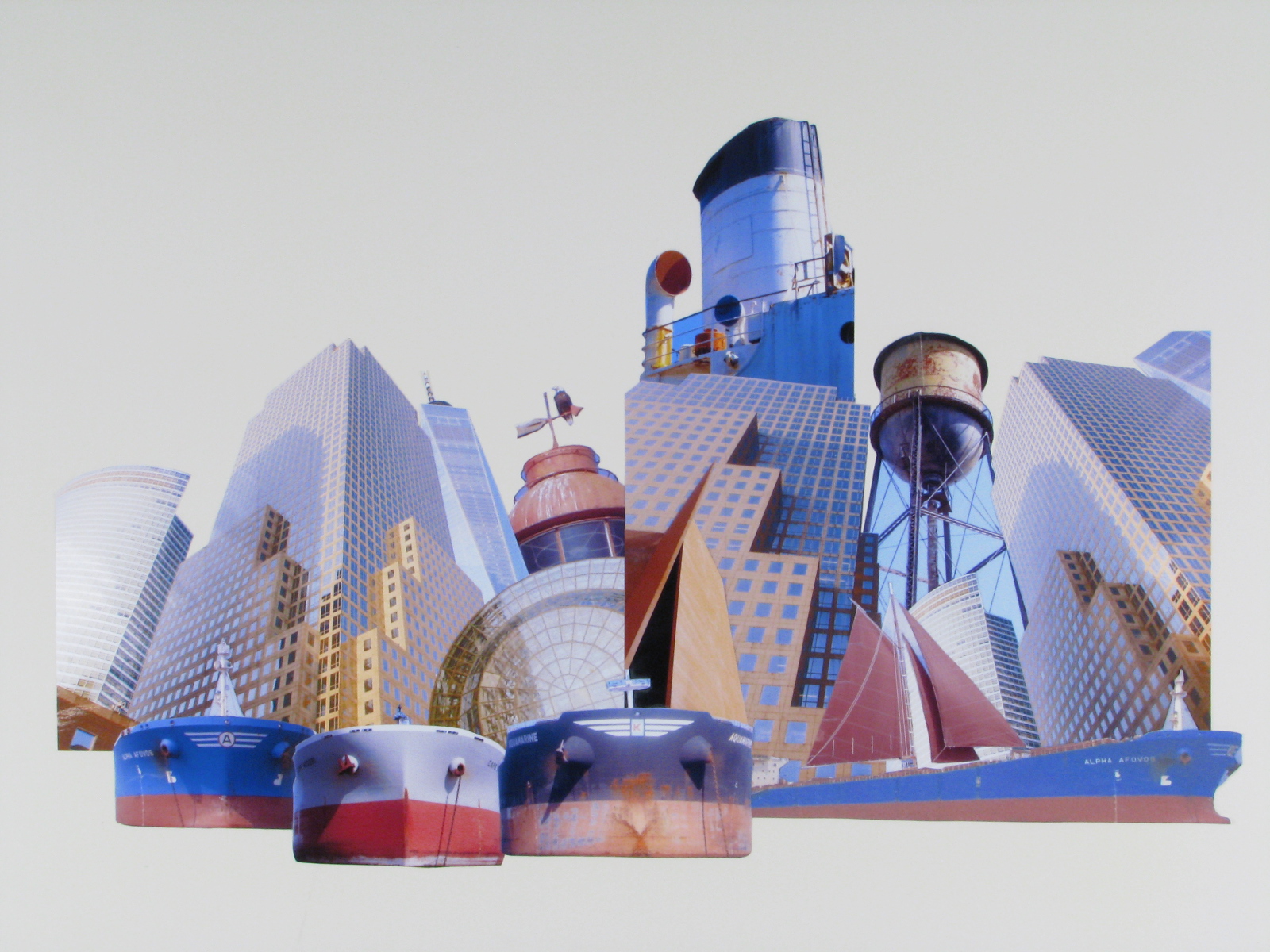
Valerie Arntzen is an assemblage artist who loves junk. She collects, re-uses and recycles wood and metal and gives new life to discarded objects, creating evocative work which transports back to a memory of a special trip, person or event.
I collect secondhand objects, old wood and metal that come with a patina I could never replicate from being in the ocean for so many years. For me, creating assemblage from found or discarded objects started with an emotional attachment to older objects, but as my career progressed, I realized this is actually a good practice because I wasn’t buying new.
If I need something I put it out to my art community and then ‘boom!’, it appears at some point at my studio. There are a lot of items in the world that need to be used, reused and repurposed. I think the more artists use and voice their opinions about recycled and green products, the more they will influence the market.
Website: paneficio-gallery/valeriearntzen
Instagram: arntzen_valerie
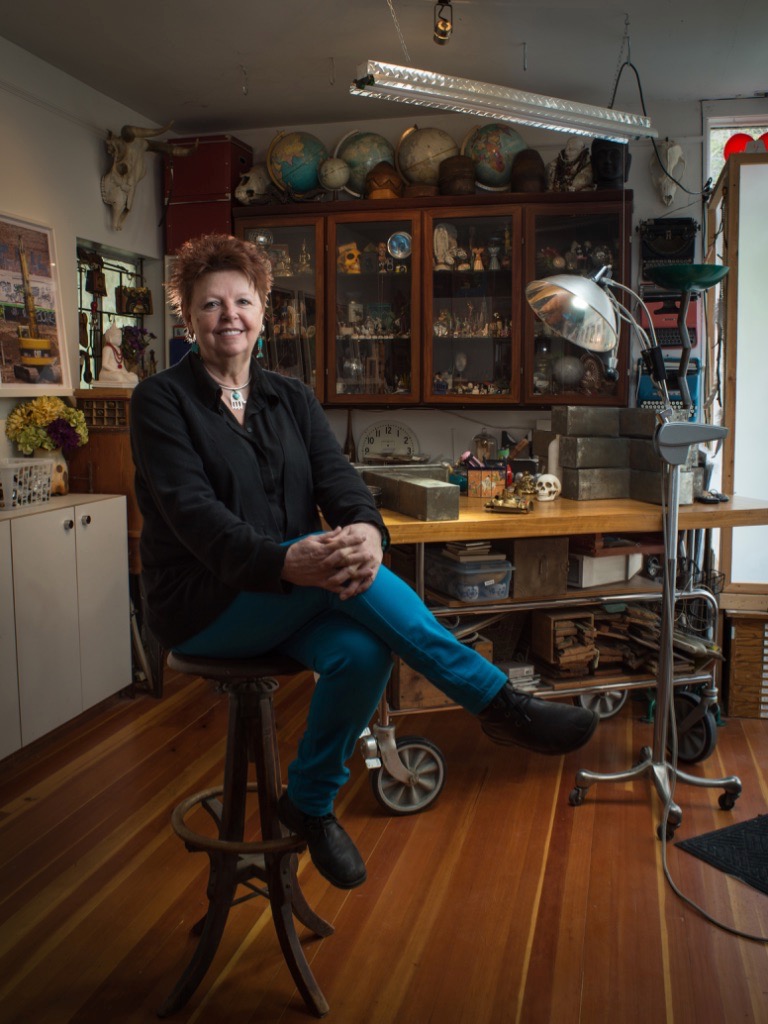
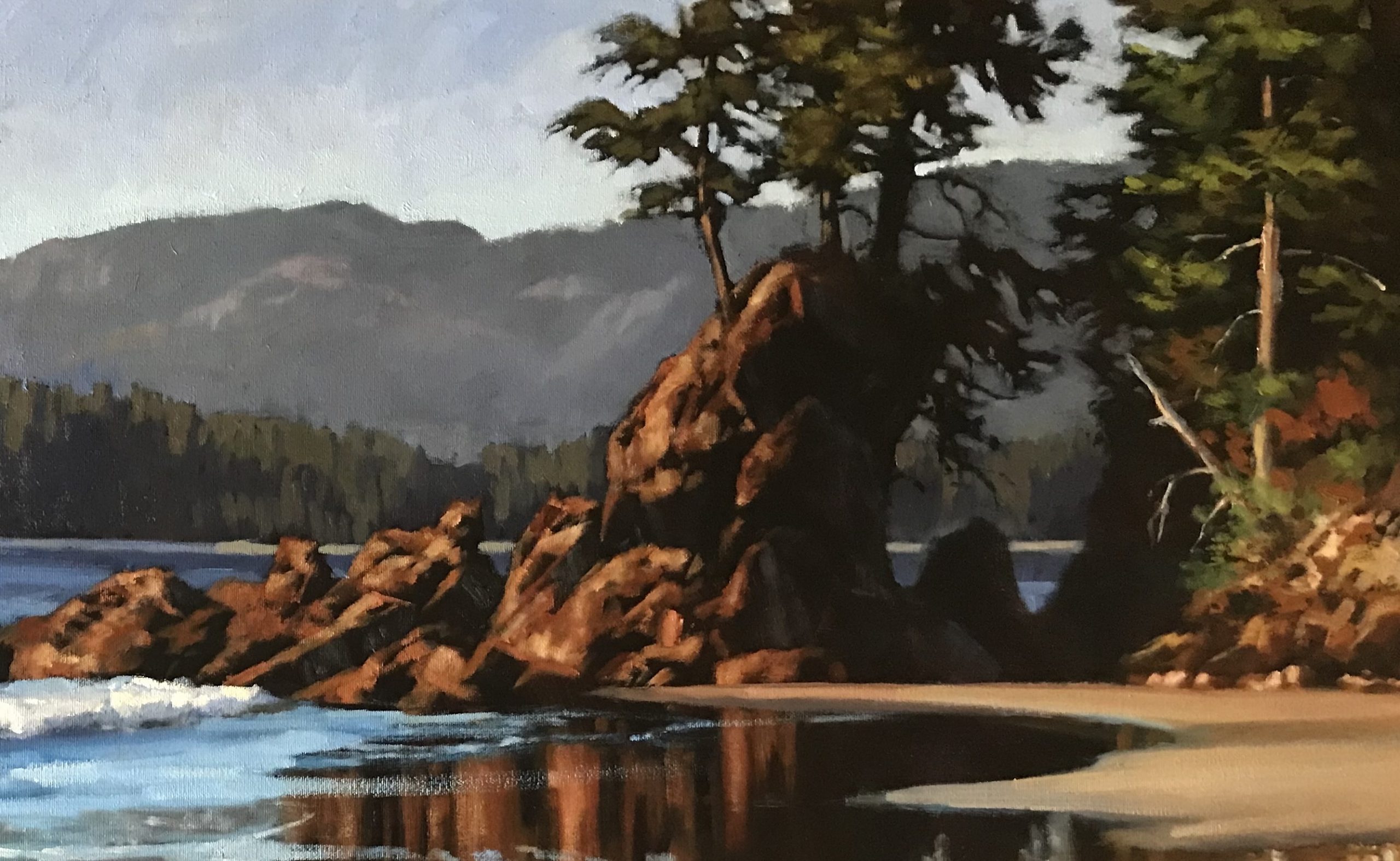
For Gaye Adams it is the awe of our wild places, particularly in BC, that drives her to the easel. The “why?” of her painting practice revolves around her connection to our amazing ecological heritage. Painting and teaching Plein air, Gaye has a deep love for our natural environment and wants to help protect it.
[With Plein air], you’re painting a living, breathing environment and experience, as opposed to painting from a photograph which is really a moment frozen in time. I find it more challenging and also more rewarding. When you’re painting in an unsullied environment where the ecosystem is still intact, it’s like being in a church – I feel connected to everything around me.
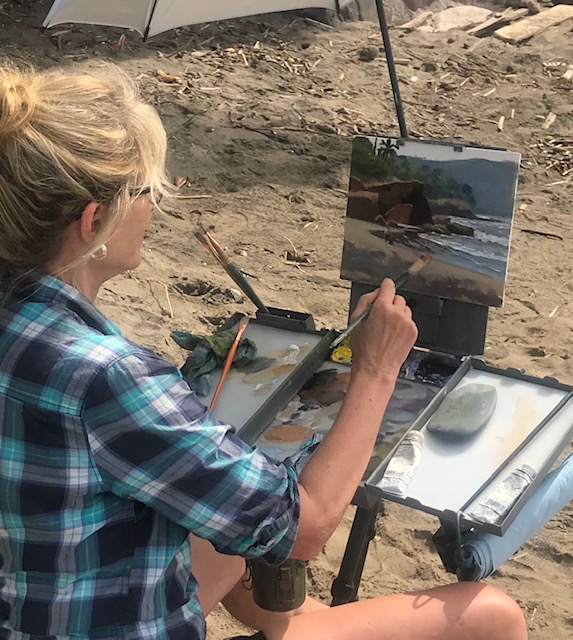
I think most of us artists are trying to have the least amount of environmental impact that we can. You don’t want to have toxic materials being manufactured or used in your studio if you can help it, but sometimes there’s nothing like cadmium and it’s really tough to sacrifice, but it’s certainly something to consider moving forward.
For many years I’ve been asking myself, ‘What can I really do to make a difference?’ Now I’m just starting to donate 10% of the original paintings I sell privately to various environmental causes here in BC. I hope to make people notice the treasures we have and in so doing, spark a desire to protect them.
I do everything in my life as ‘green’ as possible and art is no exception, but I’m still learning what’s possible. When I’m out painting outdoors I’m extremely careful what I do with my supplies. ‘Don’t be dumping your solvent into the sand or leaving a dirty paper towel someplace!’ You have to be so careful, especially when there are high winds. Take only photos and leave nothing behind but footprints.
Website: www.gayeadams.com
Instagram: gayeadamsart
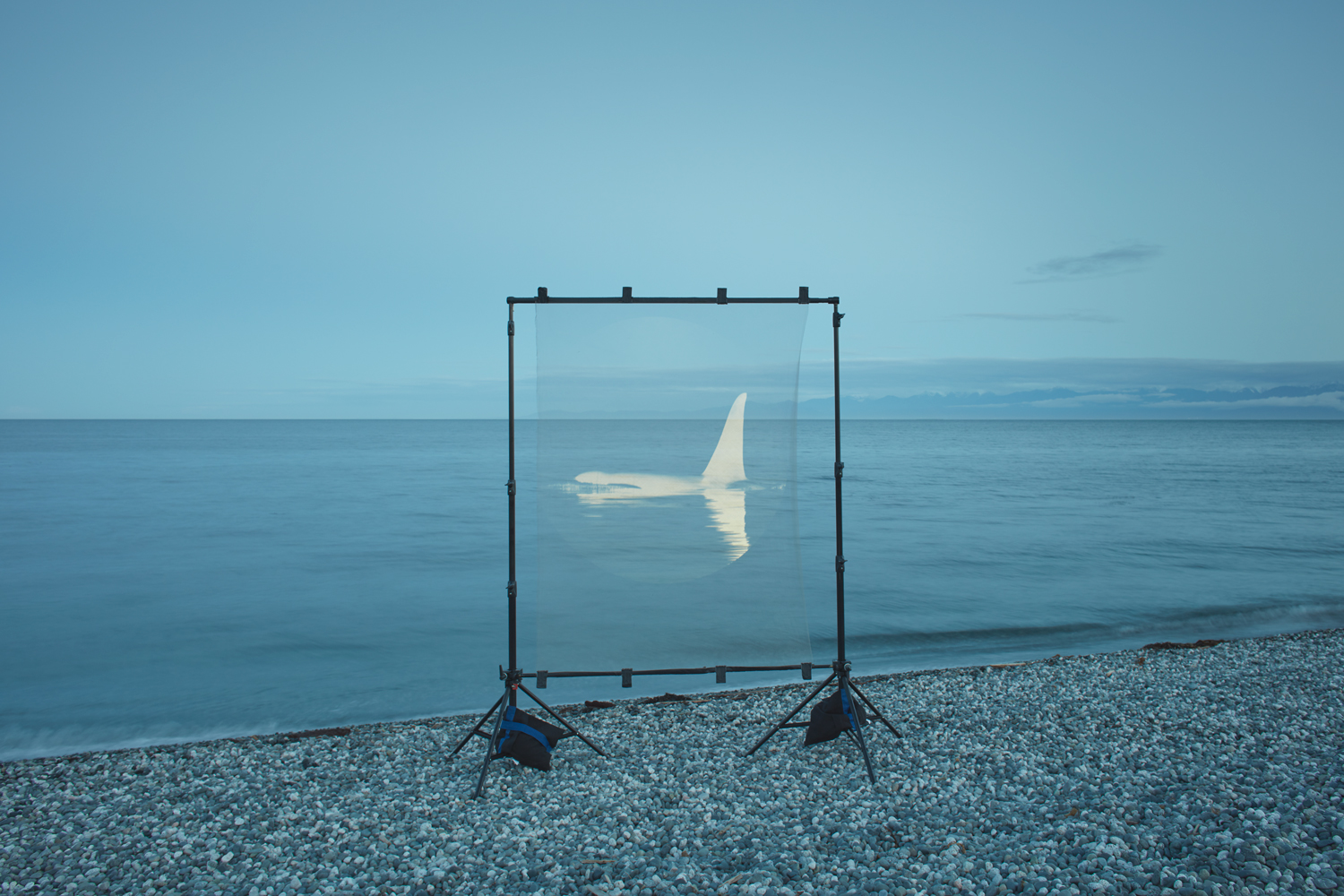
David Ellingsen is a Canadian photographer creating images that speak to the relationship between humans and the natural world. Splitting his time between his home in Victoria and the island of Cortes, where he was raised, he works predominantly in long-term, cumulative projects with a focus on climate, biodiversity and deforestation.
There can be so much gear involved in photography, so I’ve committed to being as minimal as possible and now only have one camera. I also think a lot about the actual physical impact of the physical objects I am creating and putting out into the world. In terms of the production of my work, I print using pigment inks on papers – mostly 100% cotton rag – so not doing anything with artificial materials. When I frame, I only use glass, wood or metal – I try to stay away from plexiglass and plastic and am even getting to the stage now of hanging raw prints on the wall.
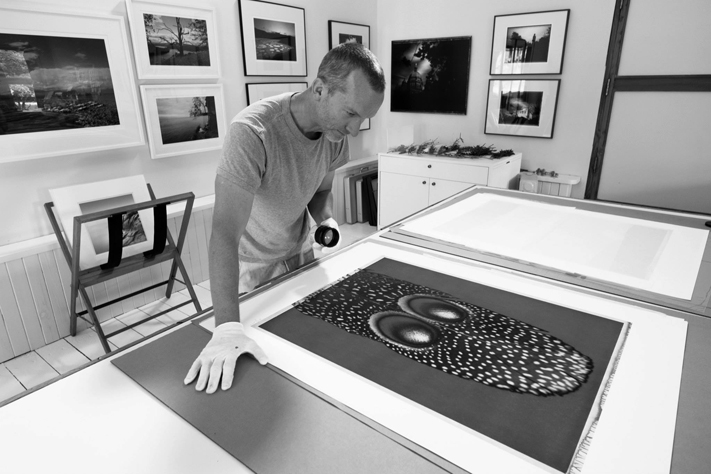
The arts are uniquely positioned to bring an emotional perspective and help people connect with climate change. I have this ongoing project called Weather Patterns which I started in 2011. It’s a daily practice where I take a photograph from the same place at the same time, creating these memorials to climate change records we continue to surpass.
It can be quite challenging to address environmental issues on a daily basis in your practice, but still, maintain some sliver of hope and not fall into despair. I’m lucky enough to be friends with one of the original founders of Greenpeace and one of the first photographers to begin using photojournalism to speak to environmental issues. I asked him, ‘How do you not get frustrated that things are only getting worse after all this time, effort and work that everybody’s done?’ and he said that we had to look at things from the perspective of deep time. No matter what happens, in another 250,000 years the earth will have cleaned itself out, hopefully, evolved into a new stage of being and life will continue.
Website: davidellingsen.com
Instagram: davidellingsenphoto/
